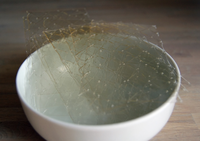
Photo from wikipedia
Abstract The present work described the construction of a highly-efficient and stable adsorbent for removing hazardous pesticide from water. Water-stable metal-organic framework (MOF) nanosheets with three-dimensional (3D) structure, named as… Click to show full abstract
Abstract The present work described the construction of a highly-efficient and stable adsorbent for removing hazardous pesticide from water. Water-stable metal-organic framework (MOF) nanosheets with three-dimensional (3D) structure, named as Al-TCPP nanosheets, were fabricated using aluminum (III) chloride hexahydrate and tetrakis (4-carboxyphenyl) porphyrin as the monomers with the assistance of a cetyltrimethylammonium bromide. Al-TCPP nanosheets and bulk crystals were comprehensively characterized to explore their differences in morphologies, microstructures and porous properties. Al-TCPP nanosheets kept the original crystal structure with an average thickness of ~17 nm. They also displayed excellent hydrophilic property, water stability and hierarchical porous structure with the surface area of 1359 m2 g−1, which were beneficial to the adsorption of chlorantraniliprole. Adsorption experiments were carried out and the maximum adsorption capacity of chlorantraniliprole on Al-TCPP nanosheets achieved 371.91 mg g−1, which was obviously higher than that of the bulk crystals (222.11 mg g−1). The disparity should be attributed to the hierarchical porous structures and highly exposed active sites of nanosheets. These results illuminate that MOF nanosheets can be a promising material for the adsorption of hazardous contaminants in water treatment.
Journal Title: Microporous and Mesoporous Materials
Year Published: 2021
Link to full text (if available)
Share on Social Media: Sign Up to like & get
recommendations!